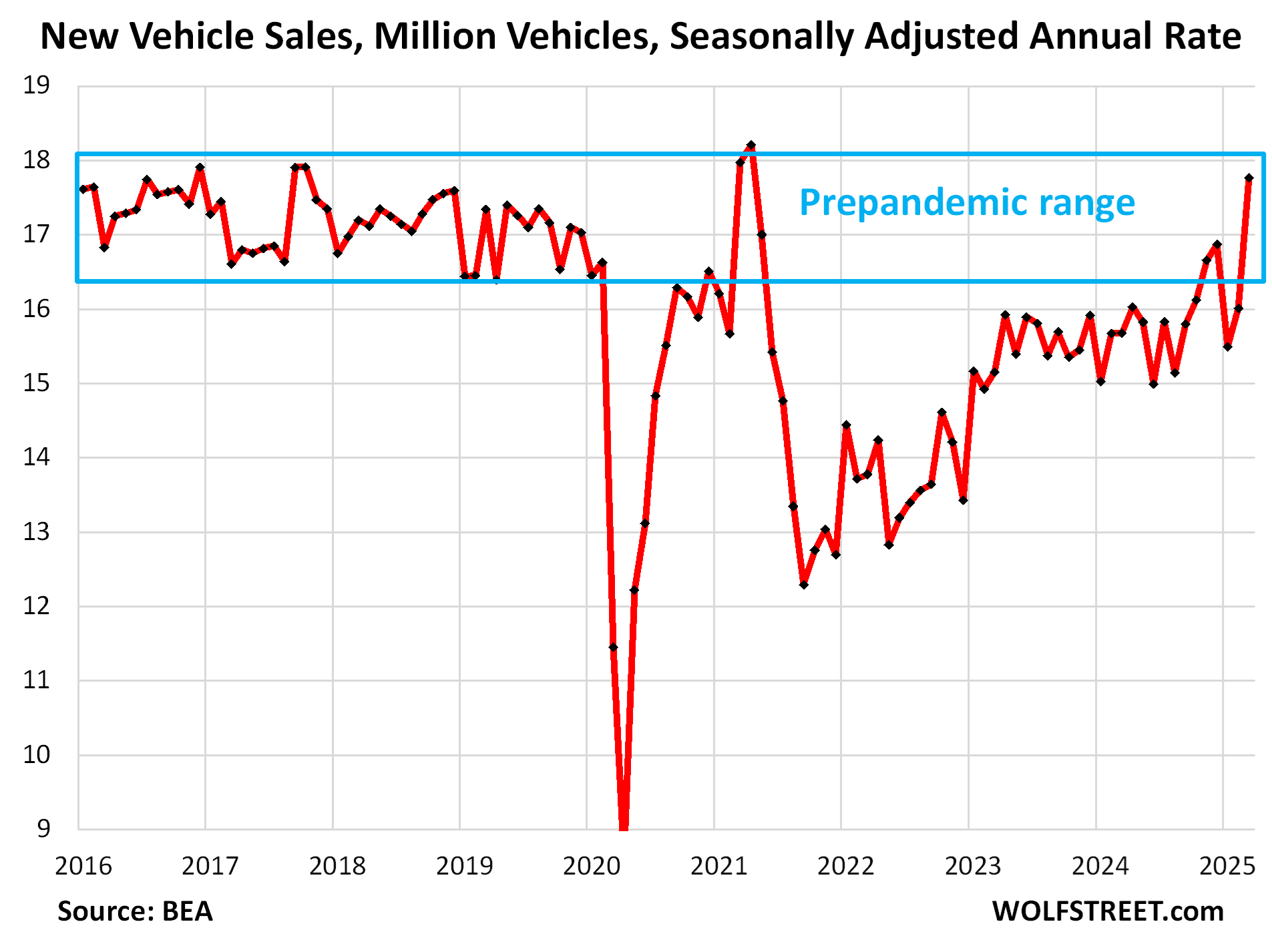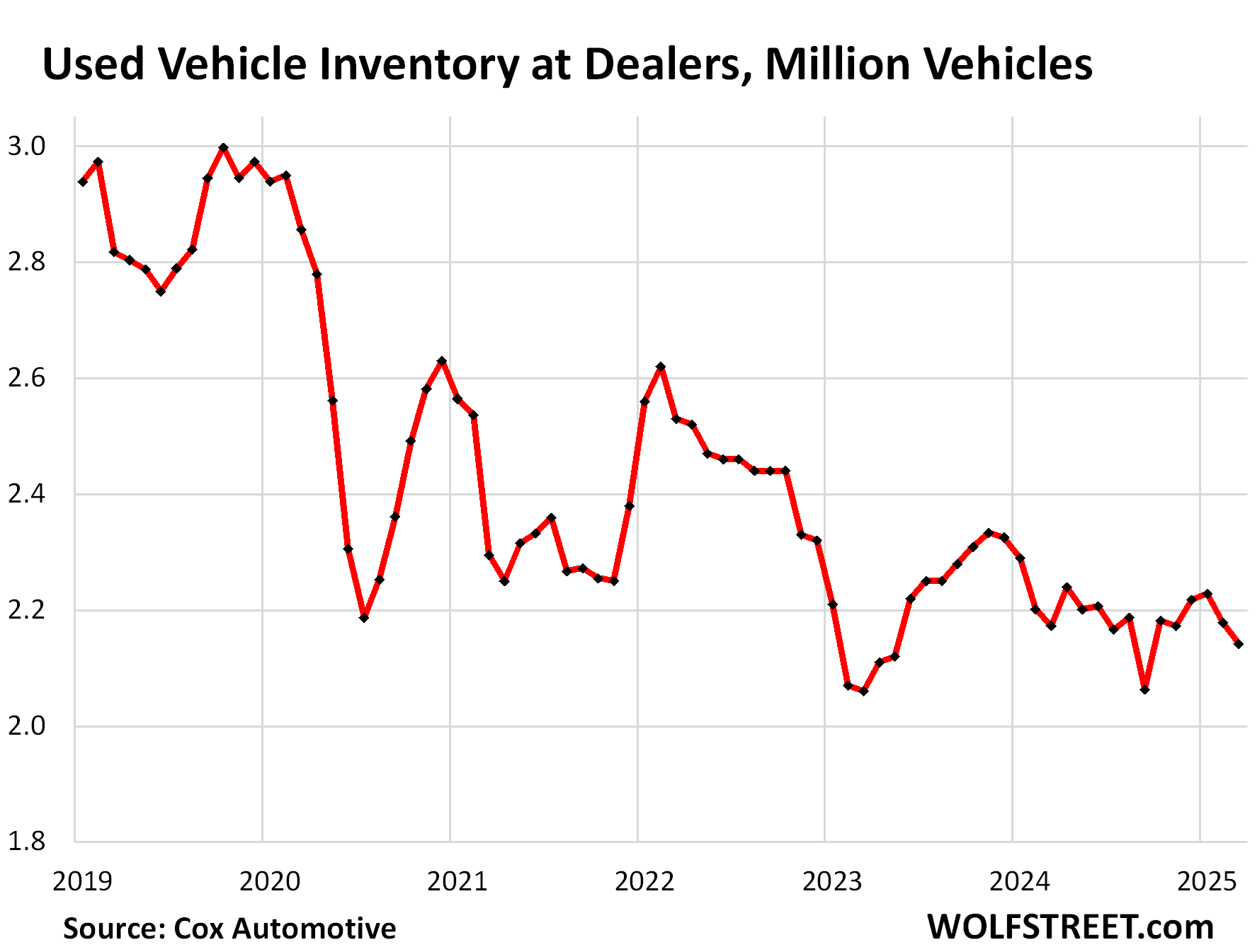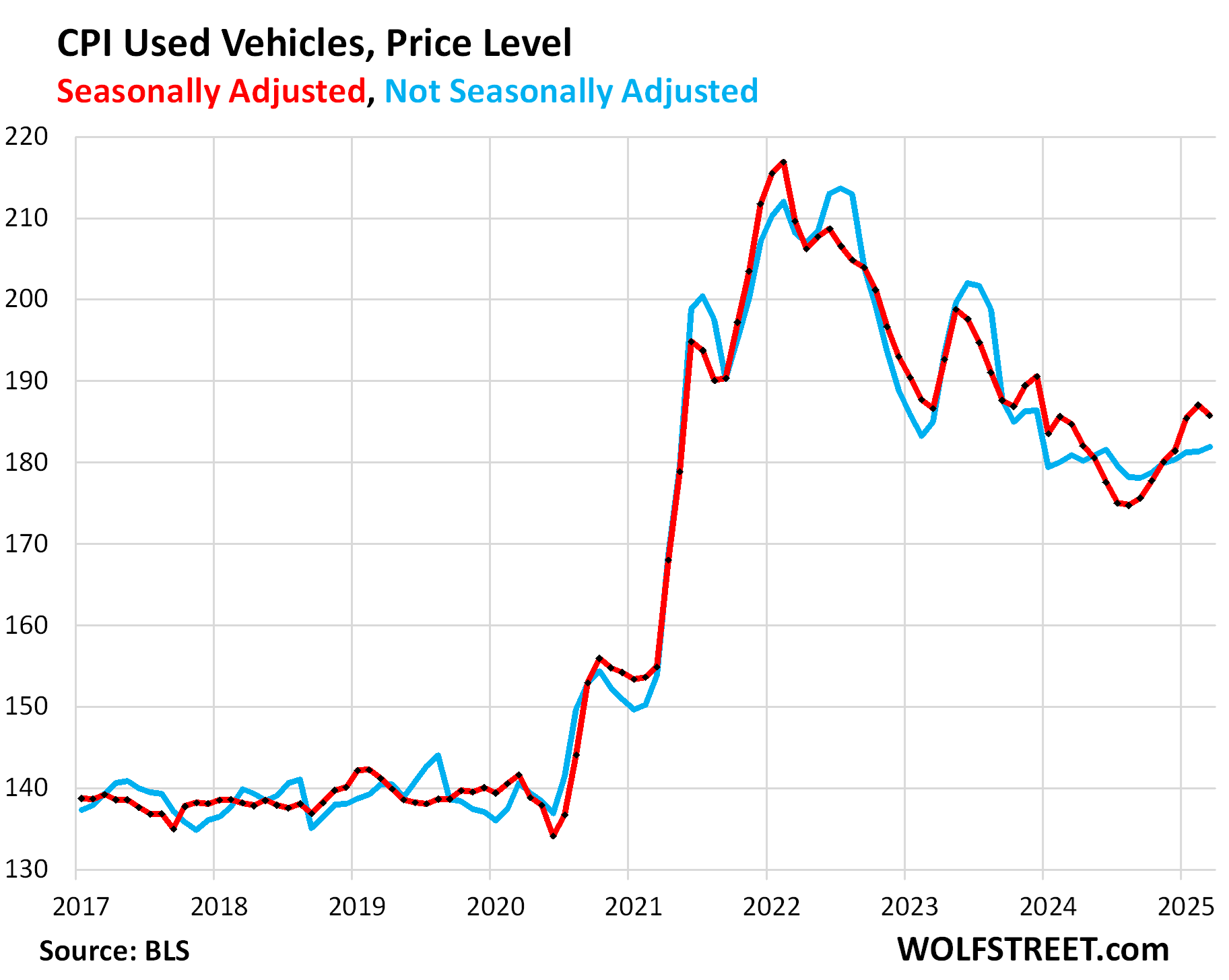
Despite their foul mood, consumers are splurging on vehicles and may also be splurging on other products.
By Wolf Richter for WOLF STREET.
Sales of used vehicles at franchised dealers (such as GM or Ford or Honda dealers) and independent dealers to retail customers spiked by 12.8% year-over-year in March, to 1.66 million vehicles, after year-over-year increases of 2.8% and 3.8% respectively in February and January, according to data from Cox Automotive.
This is tax-refund season. Tax refunds make perfect down-payments for purchasing a vehicle. The whole industry salivates over them. And tax refunds were up.
Individual income tax refunds through April 4 rose by 5.0% from a year ago to $211 billion, according to IRS data. The number of tax refunds rose by 1.4% year-over-year, to 67.7 million refunds. The average tax refund to individual taxpayers increased by 3.5% to $3,116. Tax refunds paid via direct deposit rose by 5.3% to $206 billion, and they were available for down-payments essentially right away.

Consumers are splurging on both, new and used vehicles – the biggest category in retail sales – despite fears and fretting about consumer spending in Q1, and despite the ultra-foul mood consumers are in because they hate hate hate high prices and inflation, made worse by the hoopla in the media about tariffs.
New vehicles sales, as we saw earlier in April, jumped in March by 13.3% year-over-year, after having already increased in February and January, to produce the best Q1 for new vehicles since 2019.
Tax-refund season is an important factor in new vehicle sales as well. Plus, some front-running of the tariffs also played a role in the surge in new vehicle sales.

Used vehicles are not tariffed. And the surge in used-vehicle sales is more a factor of tax refunds and the sky-high prices of new vehicles that haven’t declined much off the spike, and those sky-high prices shift sales from new vehicles to used vehicles, often on the same dealer lot. In addition, as always, the urge to trade in an old set of wheels for something nicer, and the ability to do so, played a role.
Total retail sales, based on sales by all categories of retailers, could show solid gains for March (to be released on Wednesday), after unit sales of used and new vehicles booked these strong gains. There might have been a similar surge at other retailer categories as well.
But used-vehicle inventory is tight.
The number of used vehicles in inventory at franchised and independent dealers dipped to 2.14 million vehicles at the beginning of March, according to estimates by Cox Automotive. Supply was down to 39 days.

Used vehicle inventory is fed by vehicles that had been purchased new some time ago. They enter the used market via trade-ins, lease returns, fleet turnover at rental operations (2.5 to 3.5 million vehicles in a normal year), fleet turnover at other fleets, repos, etc.
During the period of the semiconductor shortages in 2021 and 2022, global vehicle production plunged, and as a consequence in the US, 6-10 million fewer new-vehicles were sold over the two-year period than might have been sold otherwise, and these 6-10 million missing vehicles are now not flowing into the used vehicle market.
In addition, leasing activity in 2021 and 2022 plunged, which has led to a sharp decline in the number of leases that are now maturing, and so supply of off-lease vehicles has plunged. And amid very solid demand and relatively tight inventory, retail prices started to rise again last September.
Used-vehicle retail prices started rising 7 months ago.
In 2021 and 2022, used vehicle retail prices, per the Consumer Price Index, had spiked by about 55% (seasonally adjusted and not seasonally adjusted). Then in 2023 and 2024 through August, they gave up about half of that spike. But in September 2024, on solid demand and tight inventories, prices started to rise again (seasonally adjusted and not seasonally adjusted).
In March, prices continued to rise on a not-seasonally adjusted basis (blue), but that increase wasn’t as large as recent March increases, and so on a seasonally adjusted basis, prices dipped (red).

Enjoy reading WOLF STREET and want to support it? You can donate. I appreciate it immensely. Click on the mug to find out how:
![]()
Energy News Beat

